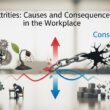Over the objections of medical ethicists, Dr. Henry Heimlich continues to push “malariotherapy” as a treatment for AIDS.
By the late 1980s Henry Heimlich’s anti-choking maneuver was world famous, and he was publicly musing over the question, what next? His first priority was establishing the Heimlich maneuver’s use in drowning rescue, in lieu of CPR. Second, he vowed he could cure AIDS by treating HIV-positive patients with malaria. He even considered running for president in order to bring world peace.
The maneuver-for-drowning campaign was based on the premise that water must be forced out of the lungs. “You can’t blow air into water-filled lungs,” according to Heimlich’s slogan.
There’s just one problem with that thesis. “The idea that inhaled water fills up the lungs in drowning is totally incorrect,” says Rear Admiral Alan Steinman, who crafted the U.S. Coast Guard’s guidelines for cases of near-drowning. Steinman and three other drowning experts I consulted all said that an involuntary response, laryngospasm, seals the lungs at the moment fluid threatens to flow in. Only a very small amount of water ultimately gets into the lungs after the spasm relaxes.
Employing the Heimlich maneuver may be not only ineffective but lethal, according to Dr. James Orlowski, another drowning expert. In 1987 Orlowski published a paper describing a 10-year-old drowning victim who had suffered complications from the rescuer’s use of the Heimlich maneuver rather than CPR. A boy who might have been saved slipped into a coma and later died.
Heimlich cites his own list of cases supporting his maneuver’s efficacy against drowning, but the people reporting these cases have prior associations with Heimlich himself. Former Washington, DC, fire surgeon Victor Esch, for example, claimed to have saved a man from drowning at Rehoboth Beach, Delaware, in August 1974 by using the Heimlich maneuver. Esch, who told me he has known Henry Heimlich for decades, can offer no hospital reports or witnesses. And he has told several different versions of the same story. During the course of one interview he told me that the incident happened at Rehoboth Beach, only to deny it five minutes later and insist that it happened at another beach.
Despite his lack of independent evidence, Heimlich had credibility with the public and the media. He could point out that at one time the choking experts had been skeptical of his maneuver, and since that turned out well they ought to trust his insight on drowning, too.
By the same tortured logic Heimlich wants to convince the world of the therapeutic power of malaria. His hopes for using the illness to cure cancer and Lyme disease had already been scuttled in the early 1990s, after the Mexican authorities shut down a clinical trial in Mexico City, according to Heimlich’s friend Harry Gibbons. So Heimlich—who trained as a thoracic surgeon and has no background in immunology—gambled that “malariotherapy” would solve the AIDS puzzle. To some researchers, including Dr. Victoria Wells Wulsin, the theory held some intuitive appeal.
“I was curious about malariotherapy, because infection can be an immune booster,” says Wulsin, an epidemiologist hired by Heimlich in August 2004 to study the theory’s plausibility. “You get sick, and your body responds with white blood cells. That’s what you need to fight off HIV, right?”
But more than 10 years earlier the Centers for Disease Control had declared that “No evidence currently exists to indicate that malaria infection would beneficially affect the course of HIV infection.” And since malaria might be harmful to a patient whose immune system is already compromised by HIV, the agency added that clinical trials “cannot be justified.” The CDC warning had come in direct response to Heimlich’s first malariotherapy experiments in China—work that, like the subsequent trials in Africa, is shrouded in mystery and which continues to raise serious questions about its efficacy and the apparent disregard of basic ethical standards in medical study.
Last January Dr. James Kublin, who analyzed the connection between malaria and AIDS in the East African nation of Malawi, published his findings in the respected British medical journal Lancet. Kublin reported that malaria infection can actually exacerbate the speed of HIV’s attack on the body.
“Malaria causes immune activation, and immune activation is associated with, of course, an increase in the number of immune cells,” says Kublin. “But that’s a transient increase in CD4 cells. The problem with that is when you increase the number of CD4 cells you also increase the number of potential targets for HIV. And those CD4 cells are then infected by the virus—and then turn out more virus.”
“It is clearly deleterious to people with HIV to get malaria. It can accelerate their mortality,” says Mark Harrington, executive director of Treatment Action Group, which analyzes AIDS research. “Using malaria as a ‘therapy’ is really malpractice and probably should be criminal.”
Heimlich’s first clinical trial took place at Yishou Hospital in Guangzhou, China, in 1993. In advance of this experiment, Heimlich circulated a study protocol that called for two groups of HIV-positive volunteers to be infected with malaria, which would then be allowed to go untreated for either two weeks or four weeks. It stipulated that the volunteers should be treated for malaria only if their temperatures topped 106 degrees.
For AIDS experts the study’s most galling aspect—recorded in the final published report—was its rule that the HIV-positive volunteers express a “willingness to not participate in other HIV therapies for [the] duration of the treatment and follow-up period.” This meant the volunteers would go as long as two years without treatment. Somehow Heimlich and his colleagues found eight HIV-positive patients to enroll in the study.
Xiao Ping Chen, the Chinese researcher who oversaw the study on Heimlich’s behalf, claims that the patients all survived and “remain clinically well” as of the follow-up period’s close. But the study does not cite data for six of the eight patients’ past six months, nor does Chen explain the omission. Heimlich refused to provide me with Chen’s contact information, nor did Chen respond to questions sent to e-mail addresses cited in his published material.
For the second study Heimlich enlisted the assistance of John Fahey, a UCLA immunologist, putting him in touch with Chen, with whom Fahey oversaw a clinical trial that tested malariotherapy on 12 HIV-positive Chinese patients beginning in 1998. Again, the study took place in Guangzhou. Again the subjects were injected with malaria, and the disease was allowed to go untreated, this time for a minimum of 10 malarial fevers, i.e., two to four weeks. The patients were placed in three groups according to their CD4 cell counts per cubic millimeter of blood. At one end were those for whom HIV had had only a modest impact on their immune systems, with CD4 counts of over 500. At the other were patients whose CD4 counts had fallen below 200, meaning they had developed full-blown AIDS and would die without a proven intervention such as antiretroviral therapy.
As would be expected, the malaria produced the “transient” burst of immune substance predicted by AIDS experts, but as they might have also predicted, the elevated immune levels didn’t last long. The resulting paper, published in the Chinese Medical Journal, shows that most of the patients displayed CD4 counts that were too scattered to draw a conclusion. One patient—the one with the most advanced case of AIDS—died. The data for the patient who began with the second-lowest CD4 count simply disappears at the end of the study. Chen cites a telephone interview with the patient in which he confirmed the patient’s being “clinically well.”
But that seems unlikely, given the rule that the patients were prohibited from getting antiretroviral therapy, not to mention the possibility that malaria infection hastened the patients’ progression to AIDS. And what happened to the six HIV-positive people whose data vanished six months after the first study began?
“That’s my question,” says Kublin, author of the Lancet study. “Did all of these people survive those two years? I mean, there are two subjects with CD4s less than 200, and [the researchers] don’t have any data on them. I suspect they died.”
More recently Heimlich has sought to bring malariotherapy to another location where Western medical ethical standards are loosely observed: Africa, where AIDS kills 2 million people each year. Neither Heimlich nor his spokesman Bob Kraft would answer my request for information about Heimlich’s studies in Africa. But a number of ancillary characters who have assisted Heimlich’s efforts are less guarded, and through them a picture emerges, incomplete but still ghoulish.
While researching her report Dr. Wulsin, who has field experience with AIDS in Africa, says that Heimlich’s assistant, Dr. Eric Spletzer, gave her data that had been gathered from Africa—CD4 counts, apparently from HIV-positive patients who also had malaria—but would not disclose the usual contextual information. There was no signature from the researcher who took the data, and no explanation of how it was gathered. This struck Wulsin as strange; she needed that information to make sure the data wasn’t biased. When she asked Spletzer for it, he refused. “I think Eric and Hank [Heimlich] knew things that, for a variety of reasons, they didn’t want to share with me,” says Wulsin, who declines to say more about what those reasons might be.
Wulsin’s report, based on information gathered from inside the Heimlich Institute, offers the best glimpse into the size and scope of Heimlich’s malaria endeavors. It refers obliquely to “an American sponsor” (Wulsin says she was never told the sponsor’s identity) who in 2000 collaborated with the Heimlich Institute in conducting a malariotherapy study in East Africa. In 2003, says the report, this unnamed sponsor “commenc[ed] infection with malaria among 12–13 HIV-positive East African patients.”
A footnote says that this study “lost” four or five subjects during the follow-up period, which would reduce the number of patients in the study to eight.
“There was a firewall,” Wulsin says of the problems she faced in getting information from the institute. “I could see from Heimlich’s point of view why they wanted to protect their sources, but it was certainly a disagreement that we had. I’m pretty Western, and I said, ‘No, I’m not going to place any stock in these results.’?”



